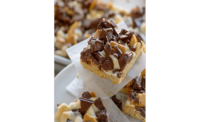Health consciousness, more solo households, and convenience are among the reasons more U.S. consumers, particularly young adults, are eating snack foods as part of their main meals, finds The NPD Group, a leading global information company. Although most snack foods are eaten between meals, snack foods eaten at main meals now represent 24 percent of all snack food eatings, which is up from 21 percent five years ago, according to NPD’s continual tracking of U.S. consumers snacking attitudes and behaviors.
The trend toward eating snack foods at main meals is being driven by Gen Zs and Millennials. Older Gen Zs and Millennials are more comfortable eating alone than are previous generations, and snack foods offer a low-cost, smaller portioned alternative that fits that lifestyle. They are also shifting toward fresh foods and foods with a healthy halo, which is why fresh fruit and refrigerated yogurt are among the top snack foods included in main meals. As Gen Zs and Millennials age and move through life stages their interest in consuming snack food at main meals is expected to continue. Annual eatings per capita of snack food at main meals is forecast to grow by 12 percent by 2024, according to NPD’s Generation Study: The Evolution of Eating.
There are 12 billion snack visits made to restaurants and other foodservice outlets, reports NPD. When snacking replaces an away-from-home meal, the meal is most often lunch. Eight percent of foodservice snack visits occur during the lunch timeframe. Morning snacks represent 23 percent of foodservice snack visits and evening 30 percent.
“Although consumers are not adding new snacking occasions to the day, there is a shift in what’s eaten at main meals and how snacking is viewed,” says David Portalatin, vice president, industry analysis, The NPD Group. “Consumers today expect snacks to work for them; the snack is no longer just a reward."
"Snack foods that offer consumers flexibility on price, portion size, and portability allow them to compose an eating occasion that fits their specific needs at the time, whether they look at it as a snack, meal replacement or part of a main meal occasion," Portalatin says.




